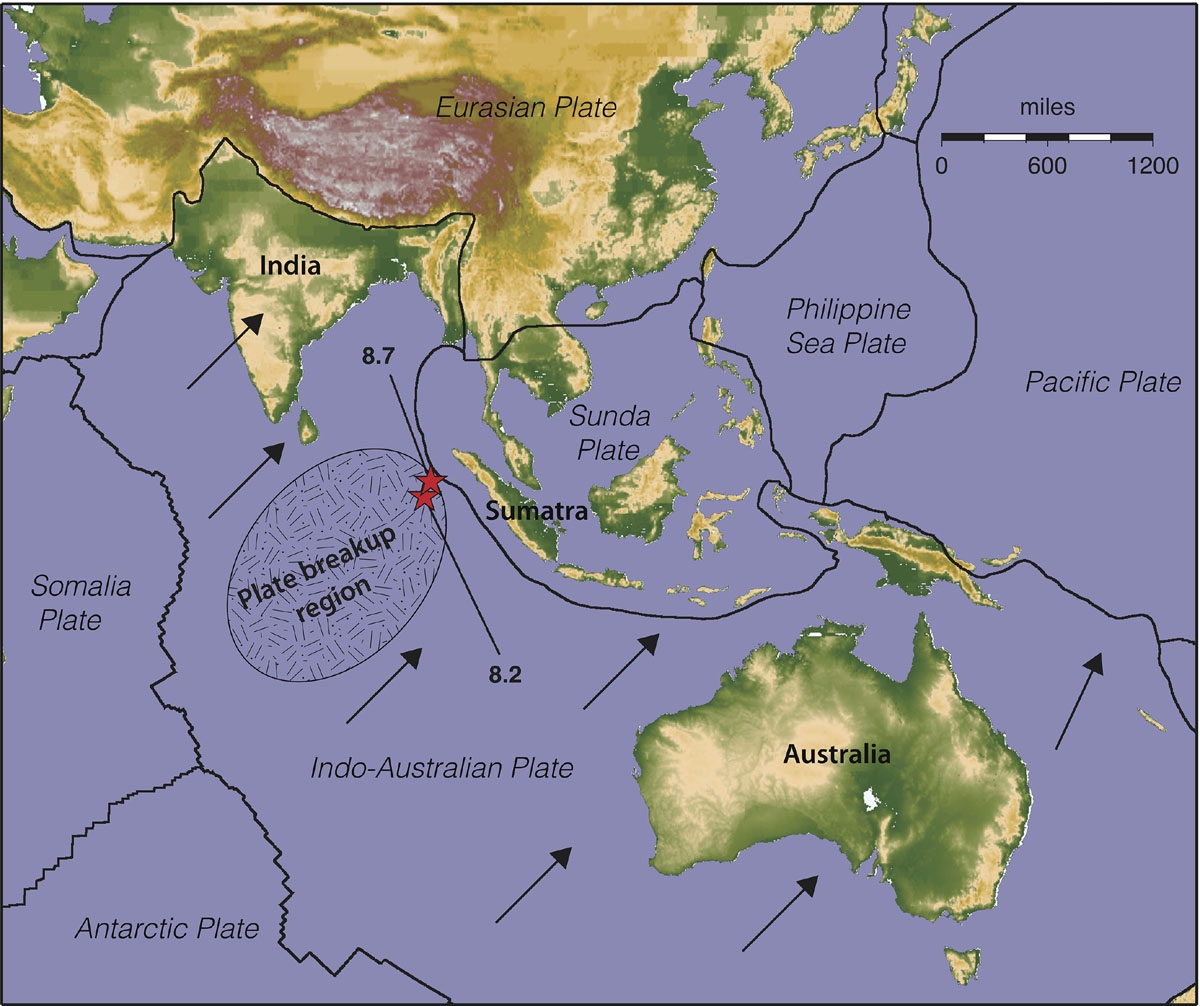[World Report] Scientists: Indo-Autralian plate boundary may be breaking up

At least four faults within the Indo-Australian plate ruptured simultaneously in April 2012, resulting in two magnitude-8 earthquakes within two hours. (Red stars indicate the epicentres.) (Photo: KEITH KOPER, UNIVERSITY OF UTAH SEISMOGRAPH STATIONS / www.nature.com)
Nature Journal on Wednesday (Sept 26) published three papers on scientists finding of hint of new tectonic plate boundary.
A pair of earthquake that occurred in the Indian Ocean on 11 April 2012 signaled the latest step of the formation according to the Nature.
Seismologists have suspected since 1980s that the Indo-Australian plate may be breaking up.
“But the 11 April earthquakes represent the most spectacular example of that process in action,” said Matthias Delescluse, a geophysicist at the Ecole Normale Supérieure in Paris and lead author of the first paper.
“Worldwide, it’s the clearest example of newly formed plate boundaries,” he added, quoted from the Nature’s official website.
According to a plate tectonics theory, the Indo-Australian plate has been starting to internally cracked 10 million years ago, as the plate moved northwards, the region near India crunched against the Eurasian plate.
Scientists believe that Australian portion forged ahead, creating twisting tensions that are splitting the plate apart in the Indian Ocean.
The scientists found that the earthquakes along the eastern plate boundary in 2004 that unleashed a massive Tsunami and another earthquake in 2005 might triggered the 2012 event by adding to pent-up stresses in the plate’s middle region.
Indonesian Sumatra Island lies above the meeting point of Indo-Australia Plate and Sunda Plate.
In 2004, Indonesian Province of Aceh was shaken by earthquake with magnitude of 9,3 Richter scale that cause Tsunami.
The 2004 Tsunami hit 8 countries and killed 230.000 people. Around 127.000 died and 37.000 people missing in Aceh.
One of the journals that Nature publishes also studies on the after-effect of the giant tremor.
Scientists found that 6 days after the April 2012 earthquake unleashed aftershocks for 6 days afterwards.
“Aftershocks are usually restricted to the immediate vicinity of a main shock,” Fred Pollitz said.
Fred Pollitz is the lead author and a geophysicist at the US Geological Survey in Menlo Park, California.
“The 11 April example should challenge conventional definitions of how soon and how close aftershocks can occur to large earthquakes.” Fred said as quoted from the Nature’s homepage.
Meidyana Rayana Intern Reporter news@theasian.asia














































































































